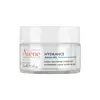What's inside
What's inside
 Key Ingredients
Key Ingredients

 Benefits
Benefits

 Concerns
Concerns

 Ingredients Side-by-side
Ingredients Side-by-side

Propylene Glycol
HumectantCarbomer
Emulsion StabilisingXanthan Gum
EmulsifyingGlycerin
HumectantBenzyl Alcohol
PerfumingPetrolatum
EmollientCetyl Alcohol
EmollientStearic Acid
CleansingPalmitic Acid
EmollientZinc Glutamate
Skin ConditioningGlyceryl Stearate
EmollientAluminum PCA
AstringentMagnesium Silicate
AbsorbentDimethicone
EmollientSilicon
AbrasiveWater
Skin ConditioningWater
Skin ConditioningGlycerin
HumectantCaprylic/Capric Triglyceride
MaskingHydroxyethyl Acrylate/Sodium Acryloyldimethyl Taurate Copolymer
Emulsion StabilisingIsocetyl Stearoyl Stearate
EmollientTriethylhexanoin
MaskingBetaine
HumectantPolyglyceryl-10 Myristate
Skin Conditioning1,2-Hexanediol
Skin ConditioningAloe Barbadensis Leaf Juice Powder
Skin ConditioningBehenyl Alcohol
EmollientCaprylyl Glycol
EmollientCitric Acid
BufferingEthylhexylglycerin
Skin ConditioningParfum
MaskingHelianthus Annuus Seed Oil
EmollientLecithin
EmollientPolysorbate 60
EmulsifyingPropanediol
SolventSodium Hyaluronate
HumectantSodium Phytate
Sorbitan Isostearate
EmulsifyingSqualane
EmollientTocopherol
AntioxidantTocopheryl Glucoside
EmollientXanthan Gum
EmulsifyingWater, Glycerin, Caprylic/Capric Triglyceride, Hydroxyethyl Acrylate/Sodium Acryloyldimethyl Taurate Copolymer, Isocetyl Stearoyl Stearate, Triethylhexanoin, Betaine, Polyglyceryl-10 Myristate, 1,2-Hexanediol, Aloe Barbadensis Leaf Juice Powder, Behenyl Alcohol, Caprylyl Glycol, Citric Acid, Ethylhexylglycerin, Parfum, Helianthus Annuus Seed Oil, Lecithin, Polysorbate 60, Propanediol, Sodium Hyaluronate, Sodium Phytate, Sorbitan Isostearate, Squalane, Tocopherol, Tocopheryl Glucoside, Xanthan Gum
 Reviews
Reviews

Ingredients Explained
These ingredients are found in both products.
Ingredients higher up in an ingredient list are typically present in a larger amount.
Glycerin is already naturally found in your skin. It helps moisturize and protect your skin.
A study from 2016 found glycerin to be more effective as a humectant than AHAs and hyaluronic acid.
As a humectant, it helps the skin stay hydrated by pulling moisture to your skin. The low molecular weight of glycerin allows it to pull moisture into the deeper layers of your skin.
Hydrated skin improves your skin barrier; Your skin barrier helps protect against irritants and bacteria.
Glycerin has also been found to have antimicrobial and antiviral properties. Due to these properties, glycerin is often used in wound and burn treatments.
In cosmetics, glycerin is usually derived from plants such as soybean or palm. However, it can also be sourced from animals, such as tallow or animal fat.
This ingredient is organic, colorless, odorless, and non-toxic.
Glycerin is the name for this ingredient in American English. British English uses Glycerol/Glycerine.
Learn more about GlycerinWater. It's the most common cosmetic ingredient of all. You'll usually see it at the top of ingredient lists, meaning that it makes up the largest part of the product.
So why is it so popular? Water most often acts as a solvent - this means that it helps dissolve other ingredients into the formulation.
You'll also recognize water as that liquid we all need to stay alive. If you see this, drink a glass of water. Stay hydrated!
Learn more about WaterXanthan gum is used as a stabilizer and thickener within cosmetic products. It helps give products a sticky, thick feeling - preventing them from being too runny.
On the technical side of things, xanthan gum is a polysaccharide - a combination consisting of multiple sugar molecules bonded together.
Xanthan gum is a pretty common and great ingredient. It is a natural, non-toxic, non-irritating ingredient that is also commonly used in food products.
Learn more about Xanthan Gum